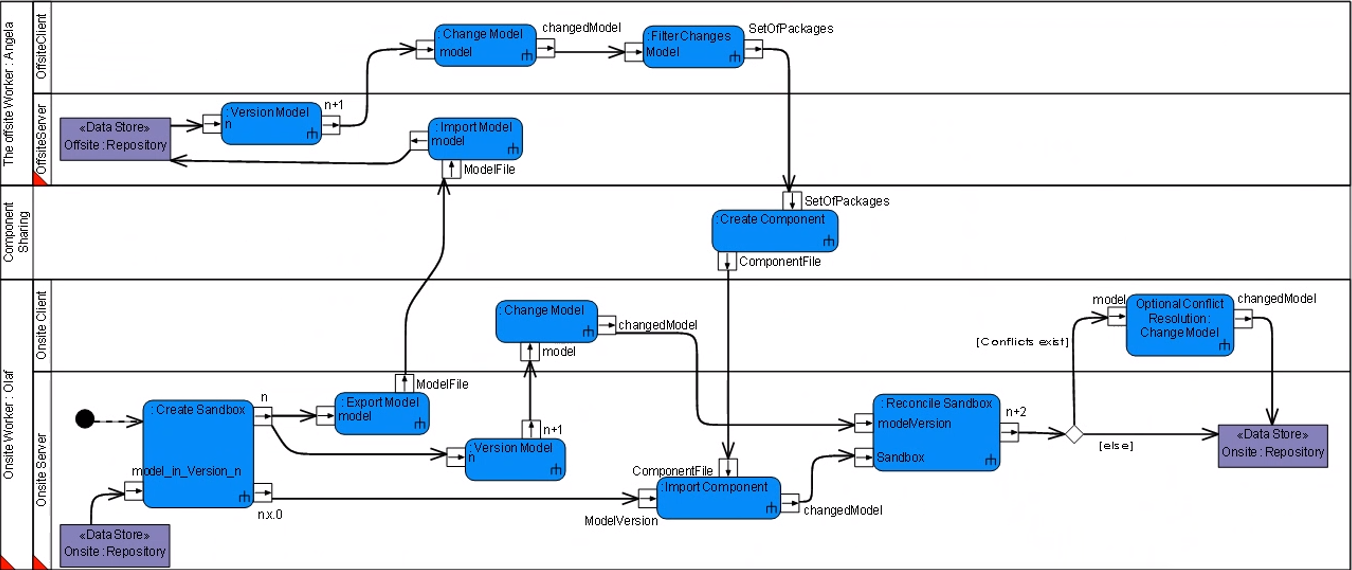Collaboration when working offline
In this topic, we discuss how you can work with models when you are not connected to the centralized server. While working offline, you can work on models, make the required updates or changes to the models, and then consolidate the changes to the corresponding models and local databases when connected to the server. You can do this with a 2–way/3–way merge that is explained in this topic. With this method, you do not have to check-out or lock the model that you will be working on in the offline mode. The following diagram illustrates the workflow involved, the steps of which are explained further down.

Steps explaining the process to work on models offline
1. Create a sandbox.
Create a sandbox of the model that you will be working on in the offline mode. This sandbox will receive the changes that you would make to the model when offline. You do not have to checkout the model or mark the areas that you anticipate to change.
2. Export the model.
Export the required model that will be imported for offsite changes.
3. Version the model.
When you create the sandbox, the base version will be read-only version. Therefore, you must version the model to continue working onsite.
4. Import the model.
You need to import the model allowing you to work on the whole model.
5. Version the model, again.
You need to version the model again for a couple of reasons; to make the model editable as the model that you had exported was a read-only model, and the other reason is to allow you to track the changes you make to the model.
6. Work on the model, make the required changes.
Once you are done working on the model, generate a Diff report to identify which parts of the model need to be sent to the sandbox that you had created in Step 1.
7. Create a component sharing file.
This component sharing file will contain all the information about the changed packages in the model. This will be needed later to update the sandbox.
8. Import component into sandbox.
Use the component sharing file to update the changes to the model in the sandbox.
9. Reconcile the sandbox.
In this step, you merge the changes into a new trunk version of the model. You can directly resolve the differences and clashes in the model.
10. Optional: Conflict resolution.
In this step, you will need to manually resolve all conflicts; conflicts such as, ordering contained elements or resolving completely different textual information. You can use the Diff report that includes links to the elements that need resolving.